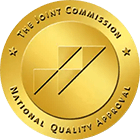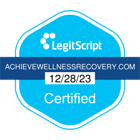If you’ve heard someone talking about speed, it’s understandable to feel confused and concerned. After all, the word speed does not come up very often in casual conversation, at least not for most people.
It’s good that you’re looking to see what speed is because the truth is that speed is a street name for a particular drug and that people talking about speed are likely either using the drug, considering using it, or know people who use it.
Here’s what you need to know about speed, from what the drug is, how it’s used and why, and the side effects, symptoms, and long-term risks associated with using the drug.
What Is Speed
Speed is used to refer specifically to methamphetamines, or meth. However, speed refers to just about any amphetamine drug today, except Adderall, which usually goes by other names when it’s being misused on the street.
Meth, and the other amphetamines that get called speed, generally have the same side effects, risks, and symptoms associated with use. However, the severity of the side effects and risks can vary somewhat from amphetamine to amphetamine.
One of the problems associated with using speed is that the users often don’t know which amphetamine they have been given. This can lead to dosing problems or people underestimating their risk of side effects or behavioral effects from the drug.
How Is Speed Used?
One of the problems with speed is that, regardless of what amphetamine is used, many options are available for users in how they want to use the drug. That means that it can sometimes be harder to spot the obvious signs of amphetamine being used, especially if the person using the drug chooses one of the less obvious methods of use.
That said, not all amphetamines can be used all the ways amphetamines can be used, which means that often people using these drugs go from a less obvious method, like orally ingesting the drug, to a more obvious method, like smoking or injecting the drug.
The most common ways to use speed include:
Most amphetamines are available in either a pill or a powdered form, but crystal meth, the crystalline form of methamphetamines, is another option. Like most other crystalline drugs, there are several different ways to use amphetamines, but it often takes a little more preparation.
The additional work combined with the higher penalties often associated with crystal meth and other crystal drugs often work together to lower the price of this form of the drug. Unfortunately, crystalline drugs are often harder to dose and may be contaminated with other substances or swapped out for other crystalline drugs. This can lead to an increased risk of overdose, extreme side effects, and other problems associated with using recreational amphetamines.
Side Effects And Symptoms Of Speed Use
There are a lot of potential side effects from speed, depending on what drug you’re taking, how much you take, and how long you take the drug.
Here are some of the common side effects of amphetamines:
In addition to those relatively common side effects, here are some of the more uncommon side effects of amphetamine use:
In addition to these symptoms, many others are either rare, may be associated with specific amphetamines more than others, or may occur with anyone. However, we don’t know how frequently or who is at the greatest risk.
There are also the more stereotypical risks associated with amphetamine use, like grinding or otherwise damaging your teeth, muscle cramps, weight loss, constipation, loss of sex drive, constipation, or thinning hair.
There are also a large number of symptoms that may indicate an overdose, including:
You might have noticed a fair amount of overlap between the common side effects and symptoms of speed use and the signs and symptoms of an overdose. This is because there are some serious similarities between the side effects, which can make it a lot more difficult to tell when you’re dealing with an overdose, vs. just having some side effects from the drug.
Risks Of Using Speed
In addition to general side effects, which are important to monitor, there can also be risks that aren’t precisely side effects but problems that happen because of drug use. Some of these risks can persist even after you stop using speed, while others may start to get better once you stop using.
For example, some amphetamine users develop Raynaud’s Phenomenon, which causes reduced blood flow to your extremities, like your fingers and toes. People with Raynaud’s may be more vulnerable to frostbite, infections, and other problems associated with circulation in the extremities.
People who use speed are also at greater risk of having seizures, especially if they already have a seizure disorder.
Erectile dysfunction is another common risk associated with using speed. Generally, this risk decreases when you stop using speed, but that isn’t guaranteed. A reasonable number of people develop more persistent erectile dysfunction that may require treatment to correct and manage.
Other risks are more psychological, and these are more likely to persist for at least a while than other side effects and complications of speed use.
These can include symptoms like intense mood swings, insomnia, changes in your libido, and the development of obsessive behaviors.
Some of the most common long-lasting side effects of speed use include increased senses of apprehension and anxiety, which may lead to increased irritability or restlessness, especially if you aren’t getting treatment for those symptoms.
Of course, all of the typical risks of drug use also come with speed, including increased risk-taking behavior, lowered inhibitions, and being unable to recognize that you are in a potentially dangerous situation until after the fact.
Younger speed users also have a few additional risks, including slowed or stunted growth. In addition, speed can have unintended effects on the cardiovascular system, increase blood pressure, and have other long-term effects.
How To Get Help Overcoming Speed Addiction
Overcoming speed addiction can be complicated and can take a lot of work and willingness to examine your life, mental health, and physical health to recover and achieve lasting sobriety.
Fortunately, you don’t need to overcome speed addiction on your own. If you’re serious about kicking this habit, contact Achieve Wellness Center. Our team is here to help you overcome addiction and give you the treatment and tools you need to live life on your terms, free from substance dependence.
We work with most insurance companies. Please note we are not affiliated with or endorsed by insurance companies.
No Medicaid Accepted.

Medically Reviewed By
Nicole Rettino-Lambert LCSW, LCADC, CCS, CCTP, CSTIP
Nicole Rettino-Lambert is a dually licensed clinician with over 20 years of experience working with children, adolescents, and adults in both addiction treatment and mental health treatment. Along with extensive experience in clinical work, she has held leadership roles in both inpatient and outpatient addiction treatments centers in New Jersey. Throughout her various leadership positions, Rettino-Lambert has developed clinical programming, assisted staff in their growth and development in the clinical field, and had the privilege of helping numerous individuals on their path to recovery.
As a clinician, Rettino-Lambert specializes in addiction trauma, mental health, self-harm behaviors, anxiety, intimacy issues, sex addiction, and personality disorders. She holds certifications as a clinical trauma professional and sex informed professional. Her passion and purpose as a clinician are to help individuals find their voice, purpose, and motivation through their recovery. She takes pride in being part of the process that helps those who are fighting for their lives to achieve both sobriety and wellness.In her role as a Clinical Director at Achieve Wellness and Recovery, Rettino-Lambert works tirelessly to ensure that her staff feels supported in their roles, continues their clinical growth and development, and is empowered to become the best versions of themselves. She firmly believes that all the staff are an essential part of clients’ recovery journey and that they deserve continuous compassion, empathy, acknowledgment, and support from leadership.





















